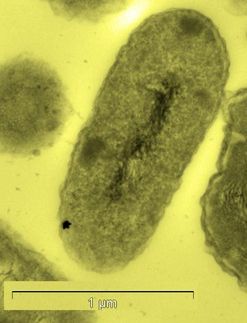How do your crystals grow?
Advertisement
Because one of the main bottlenecks in determining the structure of protein molecules is producing good isolated single crystals, improved crystallization techniques would be useful in a wide range of genomics and pharmaceutical research. Research reported in The Journal of Chemical Physics uses fluorescence correlation spectroscopy (FCS) to investigate the processes at the surface of a growing crystal. By focusing a laser on the crystal surface and measuring the resulting fluorescence, FCS can resolve dimensions as small as a single wavelength of the light.
"Another advantage of fluorescence is that it provides a high signal-to-noise ratio," says author Shinpei Tanaka of Hiroshima University in Japan. "We are able to measure very dilute solutions at the crystal interface."
The researchers found that when single tetragonal crystals of egg-white lysozyme formed, there was no concentration gradient between the solution and the crystal surface. However, in formation of clumps of needle-like branched crystals, called spherulites, the observed concentration at the surface was several times higher than that of the bulk solution. The authors attributed the difference to aggregates of loosely bound molecules near the interface.
Characterization of the dynamics near the crystal by FCS may provide direction for improving the crystallization process - currently as much an art as a science, based on trial and error - because the spherulites are not usable for structural characterizations.
"Although we knew something was different between the two crystal forms, the degree of concentration of the molecules in spherulites compared to that of the homogeneous state around tetragonal single crystals was surprising," says Tanaka.
The analytical result could lead to improvements in isolation of good crystals of biomolecules. For example, the results suggest that local heating by a laser could be used to control local concentrations and avoid spherulite formation.
Original publication: Shinpei Tanaka et al.; "Slow molecular dynamics close to crystal surfaces during crystallization of a protein lysozyme studied by fluorescence correlation spectroscopy"; The Journal of Chemical Physics 2010.
Other news from the department science

Get the life science industry in your inbox
By submitting this form you agree that LUMITOS AG will send you the newsletter(s) selected above by email. Your data will not be passed on to third parties. Your data will be stored and processed in accordance with our data protection regulations. LUMITOS may contact you by email for the purpose of advertising or market and opinion surveys. You can revoke your consent at any time without giving reasons to LUMITOS AG, Ernst-Augustin-Str. 2, 12489 Berlin, Germany or by e-mail at revoke@lumitos.com with effect for the future. In addition, each email contains a link to unsubscribe from the corresponding newsletter.




























































